Prop Test - More 10" Multirotor Props

| |
| Props! |
About this test
I'm always looking for an efficient power system and this usually means a high quality prop. With that I threw nine 10" props on the Bench Tester with a 3S pack and an 2217-1100 Supo motor to see what they would do. The props I selected for this are well known (see chart).
The charts below represent static performance which does not take into account the actual affects of flexibility/stiffness, prop weight or airfoil shape. What they do show are some efficiency differences. The numbers highlighted in green are the best and red the worst.
On the top chart all tests are normalized on the supply voltage at 11.7 volts. This is done by running each test at wide open throttle then doing the comparison where all the data lines up on a specific voltage. This gives a good view of the differences in propellor performance. The column, "Gr/W", is a simple efficiency measure of thrust, in grams per watt.
The bottom chart was normalized on Thrust. This shows how each prop performs relative to keeping a constant thrust. The first column, runtime, is a theoretical time measure at this steady state.
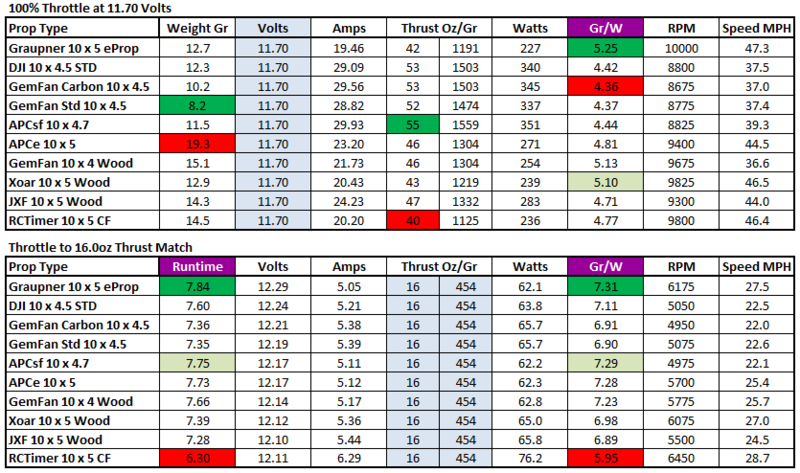
|
| Normalized test results |
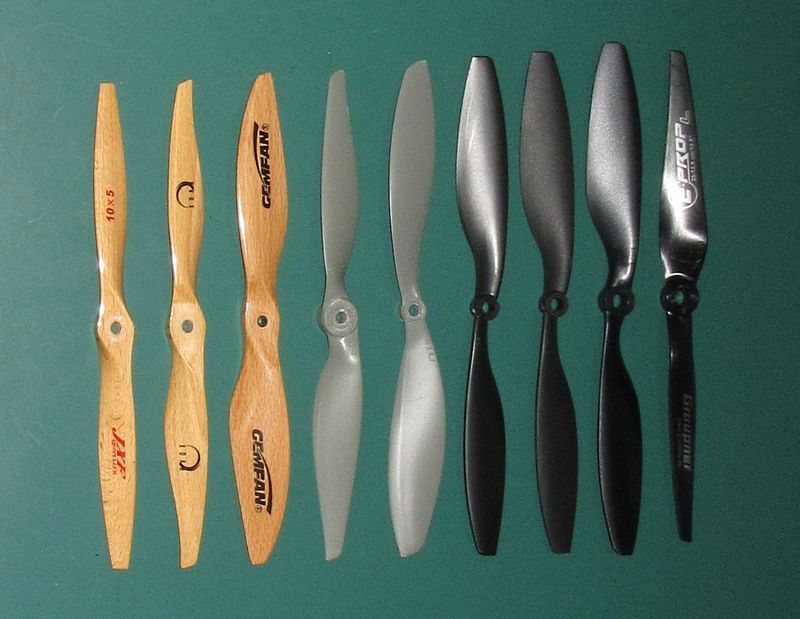
|
| The players |
Graupner No-More?
Recently it was announced Graupner has been purchased by a Korean company (March 2013). This has made it very difficult to get these props and with that, the folks at RCTimer.com have come out with a Carbon Fiber replica of the Graupner e-Props. I ordered two sets of 9" and 10" to try as they are very inexpensive.
These props are extremely stiff. More than any prop I have tested in the past. The finish is good but inconsistent. The center holes are not well centered and in one case I had to do some tooling work to get it to run true. Tracking is a little below average and balancing is definitely required. The material, a carbon fiber weave, appears very tough and will likely be very durable. As far as shape, they are nearly identical to the Graupners.
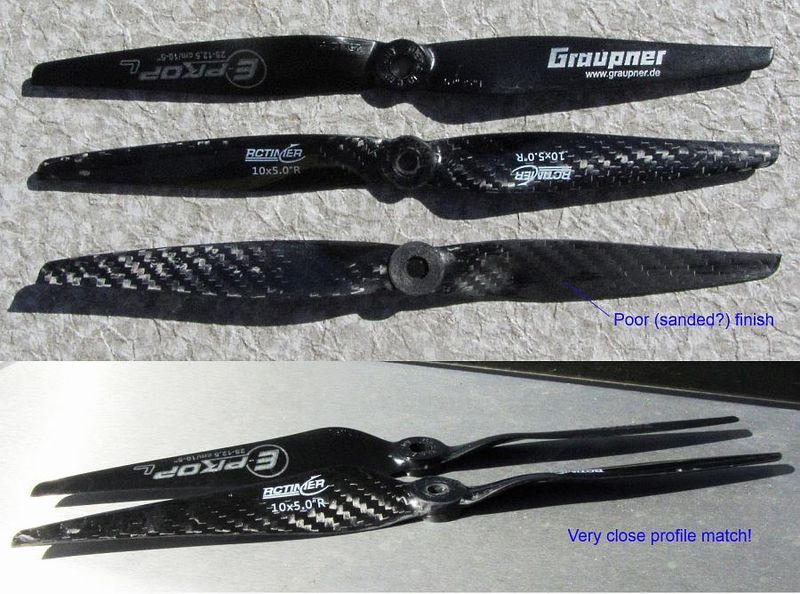
|
| The RCTimer Carbon Fiber Replica |
Another View
After some discussions with folks on RCGroups I decided to take a look at some of the props people swear by in the context of 3S vs. 4S. There is much consensus around the higher the voltage, the better the efficiency and this consensus is generally held by those with very little understanding of system design or component selection. This test view is not in any way conclusive and does nothing to answer the question of whether, in a multi-rotor application, a higher voltage is more efficient. It is simply a view of a two voltages applied to a single component change (motors) and the effect on the system across several different propellers.
See below for information on the two motors used in this test.
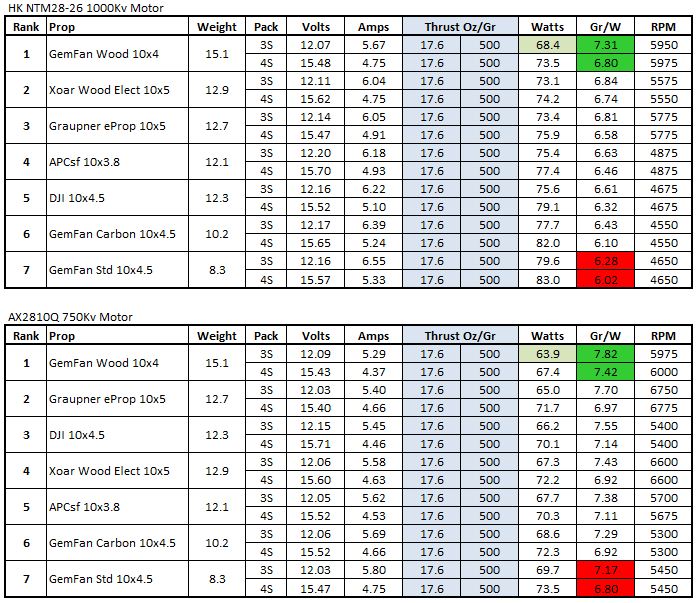
|
| Surprise with the GemFan woody!! |
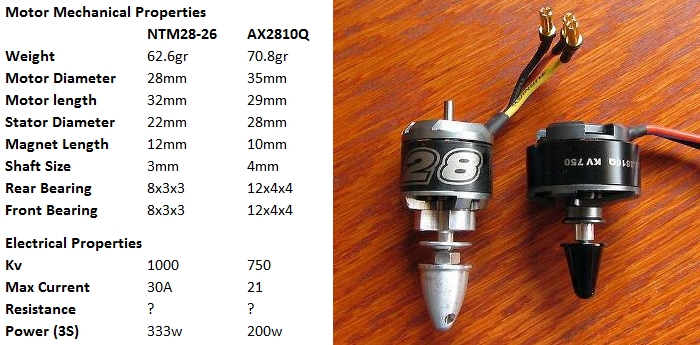
|
| Specs on the two motors |
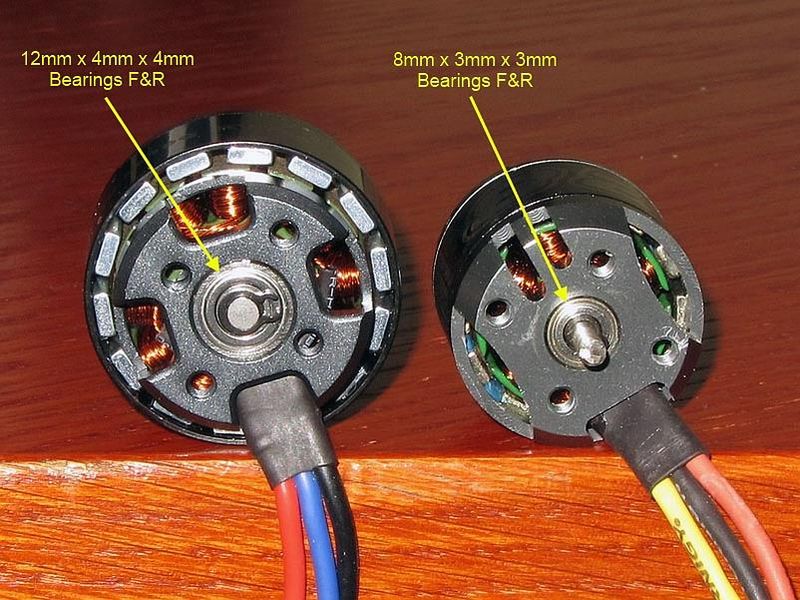
|
| The AX2810 has much more robust bearings |
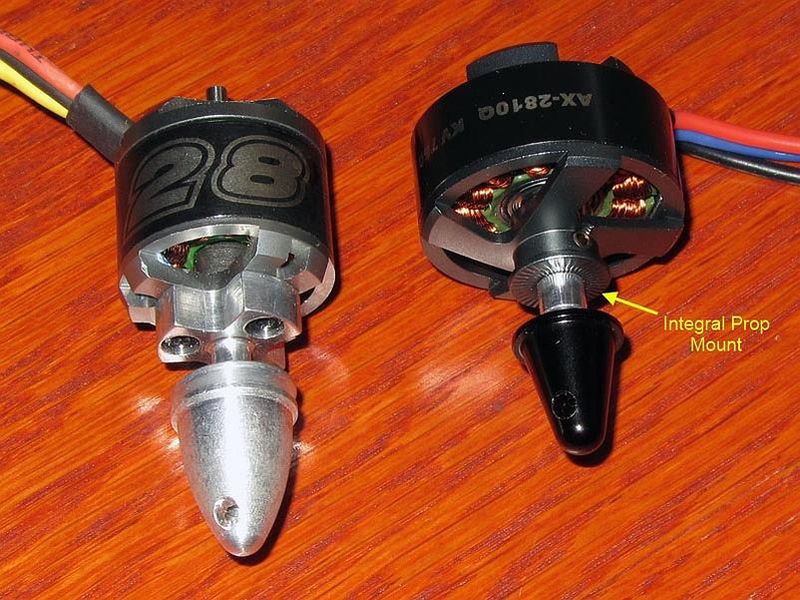
|
| The integrated prop mount is a nice touch which helps balancing and lower weight. |